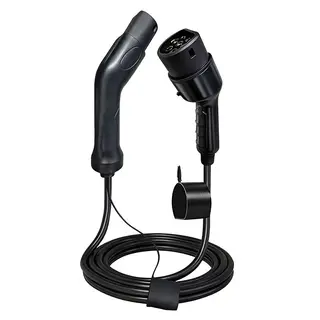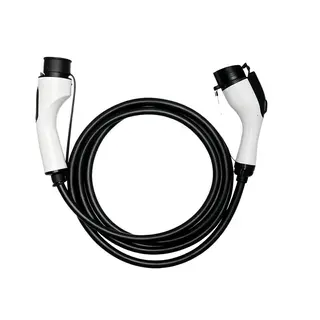With the increasing popularity of new energy vehicles, EV charging has become a daily routine for every car owner. However, during the charging process, various problems inevitably arise, and the most frustrating is when the vehicle cannot be charged. This not only wastes time but may also affect travel plans. So, what exactly causes an electric vehicle to fail to charge? This article provides a detailed analysis to help you easily deal with charging difficulties.
When an electric vehicle cannot be charged, troubleshooting the charging station is one of the key steps to solving the problem. As the important device connecting the vehicle and the power supply, the performance and status of the charging station directly affect whether the charging process can proceed smoothly. Therefore, mastering the methods for troubleshooting and resolving charging station issues is crucial for car owners.
Charging stations may malfunction due to long-term use, harsh environments, and other factors. For example, internal components may be damaged, or connections may be poor. When you encounter a charging station that cannot charge, you can try replacing it. If the problem persists, it is recommended to contact professionals for repair. Professionals can use specialized equipment to detect the cause of the charging station failure and perform repairs.
Charging line problems are also an important reason why a charging station may not charge. Charging lines may become ineffective due to aging, damage, or poor contact, affecting current transmission and charging efficiency. You can check whether the charging line is intact to determine if there is a line issue. If the line is damaged or has poor contact, it should be replaced or repaired promptly.
Unstable or excessively low power grid voltage can also prevent a charging station from functioning. During peak electricity usage, grid loads are high, potentially causing voltage fluctuations that affect the normal operation of charging stations. At this time, you can try charging during off-peak periods or install a voltage stabilizer to ensure stable voltage.
When exploring the reasons why an electric vehicle cannot charge, it is first necessary to focus on the charging equipment and environmental factors. These factors directly affect whether charging proceeds smoothly, so understanding them is the first step in solving the problem.
For car owners using portable charging guns at home, the inability of the charging gun to charge is a common problem. When you connect the charging gun to a 220V outlet at home, if the line lacks a grounding wire, the charging gun cannot function normally. Although a grounding adapter can solve this issue, from a safety perspective, it is recommended to use power sources with grounding wires whenever possible. The grounding wire prevents electric leakage and protects both you and the vehicle.
Environmental temperature greatly affects electric vehicle charging. When the temperature is low and the vehicle has been parked for a long time, the activity of the electrolyte inside the battery decreases. At this time, the battery's charging power will be very low, and it may even fail to charge. This is because in low-temperature environments, electrolyte mobility decreases, reducing battery charge and discharge efficiency. In this situation, you need to wait for the battery to gradually warm up before normal charging. Generally, after driving the vehicle for a period, the battery temperature rises, and charging efficiency improves accordingly.
On highways, the failure rate of charging stations is often higher. Some charging stations do not trigger fault alarms when they fail, leading car owners to mistakenly assume the station is normal. When you plug in the charging gun but find it cannot charge, you can choose to use a different charging station. Causes of charging station failures are numerous, including internal component damage, poor interface contact, or aging due to long-term use. If you encounter a charging station failure, it is recommended to contact the station operator for maintenance promptly.
After resolving issues related to charging equipment and the environment, if the electric vehicle still cannot charge, attention should turn to the vehicle itself. The vehicle's internal charging system, battery status, and the health of related components may directly affect whether charging can proceed smoothly.
If the problems with the charging station, charging gun, and charging interface are ruled out, a fault in the vehicle's charging system may also be the cause of charging failure. When the vehicle charging system malfunctions, related warning lights usually illuminate on the dashboard. In this case, you need to go to a 4S service center for inspection. Professional technicians can use specialized equipment to detect the cause of the fault and perform repairs.
Today, electric vehicles' traction batteries are equipped with mature Battery Management Systems (BMS). The main function of the BMS is to monitor the battery pack's status in real time, ensuring the battery's safety and performance. If the battery pack experiences liquid leakage, damaged wiring harnesses, water ingress, blown fuses, or collisions, the BMS will trigger protection mechanisms, preventing the vehicle from charging. In such cases, the vehicle must be returned to the factory for maintenance to ensure battery safety.
Battery deep discharge is also a common reason why an electric vehicle may not charge. When the vehicle is unused for extended periods or the battery ages, internal resistance increases, causing deep discharge. If the battery is too deeply discharged, immediate charging may not be possible. In this case, you can try using a low-power charger or USB interface to gradually restore energy. If the charger cannot charge the battery, it may have entered a protection mode and needs to be reactivated. Typically, you can plug in the charger, and if the charger indicator does not light up, unplug and repeat this 3–4 times to allow the battery to re-enter charging mode.
During the electric vehicle charging process, the Battery Management System (BMS) and the protection mechanisms of the charging module play crucial roles. They not only ensure battery safety and performance but also influence charging success to some extent. Therefore, understanding the operation and common issues of these systems and modules is essential for solving charging problems.
The BMS is responsible for monitoring battery status and managing charging and discharging. If the BMS malfunctions, the charging station may fail to recognize the battery status, preventing charging. In addition, BMS faults may lead to overcharging or overdischarging, affecting battery life and safety. Therefore, when encountering charging issues, it is recommended to have the vehicle inspected and repaired at a professional service point.
The protection mechanisms of the charging module are also a cause of charging failure. For example, AC input overvoltage, undervoltage, or overtemperature can trigger charging module protection. At this time, you need to check the fault codes and take corresponding measures. Additionally, high cabinet temperature or poor grounding connections of the charging module may also cause protection. You can solve these problems by inspecting the cabinet environment and verifying grounding connections.
Excessive output voltage or IGBT overcurrent can cause charging module failure. In this situation, you need to disconnect the module from AC power and restart it to restore normal function. Improper voltage adjustments may cause the module to output overvoltage. In this case, disconnect the power, turn the voltage adjustment potentiometer counterclockwise to the minimum, and then readjust the module's output voltage.
After eliminating issues with charging equipment, environmental factors, and the vehicle itself, the importance of correct charging operation and routine maintenance becomes evident. Proper charging procedures and regular maintenance can effectively prevent charging failures, extend battery life, and ensure vehicle performance.
When charging an electric vehicle, ensure the charging gun is fully inserted into the vehicle's charging port. Typically, only when properly inserted will the vehicle's charging port indicator or dashboard display relevant charging prompts. However, sometimes even with charging prompts, foreign objects at the interface may cause poor contact, preventing charging. Therefore, during daily charging, keep the charging interface and charging gun dry and clean. Regularly remove dust and debris from the charging port to prevent contact issues.
Improper operation may also prevent charging. For example, not following the correct steps before charging or unplugging the charging gun during charging. To avoid such problems, carefully read the charging station's operation manual and strictly follow the steps. Correct charging operations can improve efficiency and extend battery life.
In addition to correct charging procedures, daily maintenance is important. Regularly check the vehicle's charging system, including the charging interface, wiring harness, and BMS. Repair or replace any issues promptly. Additionally, proper vehicle usage and avoiding extended inactivity can effectively reduce battery deep discharge.
Although electric vehicle charging issues can be frustrating, understanding the causes allows for appropriate solutions. In daily use, pay attention to charging equipment selection and maintenance, operate charging stations properly, keep charging interfaces clean, and regularly inspect the vehicle's charging system. If problems arise, consult professional technicians to avoid further damage.
Developing good electricity habits is also important. For example, avoid leaving vehicles idle for long periods, use electrical devices reasonably, and charge regularly. These habits not only extend battery life but also improve vehicle performance and safety.
In short, electric vehicle charging issues are not frightening. Once you master the correct knowledge and methods, you can easily handle various charging difficulties. We hope this article helps you use new energy vehicles more confidently and smoothly.



